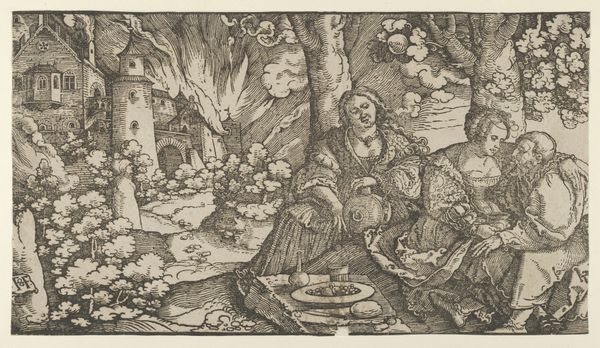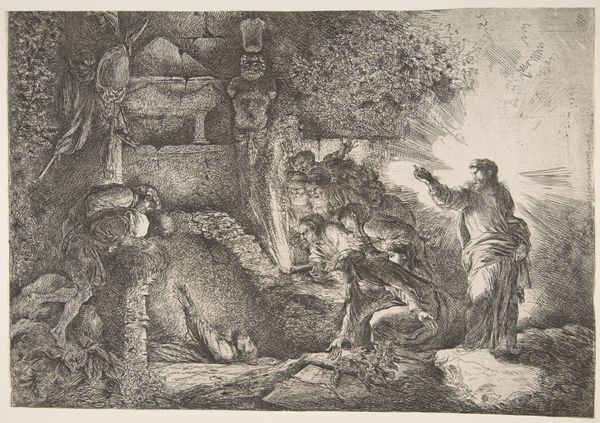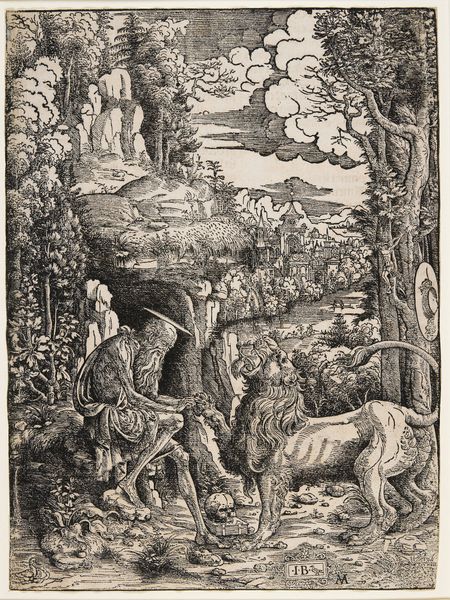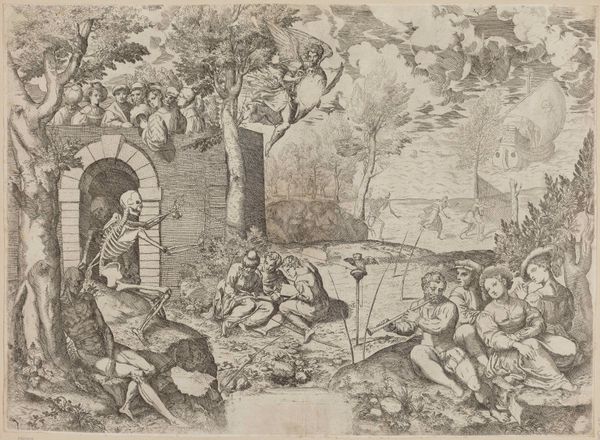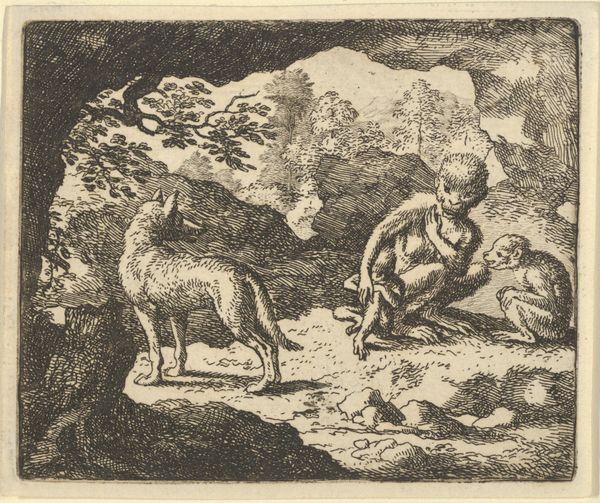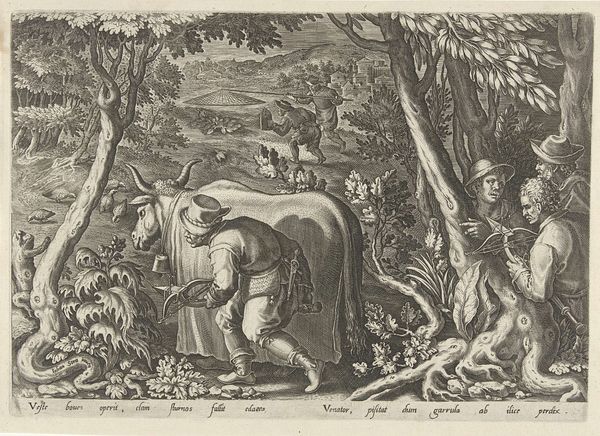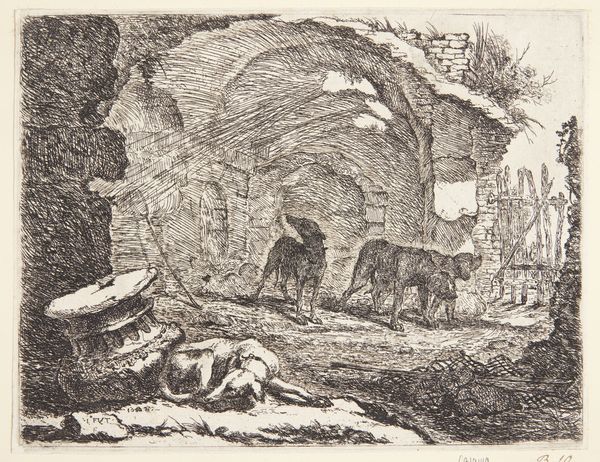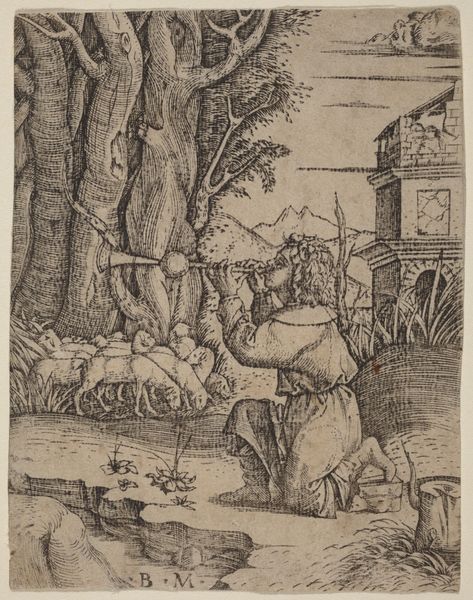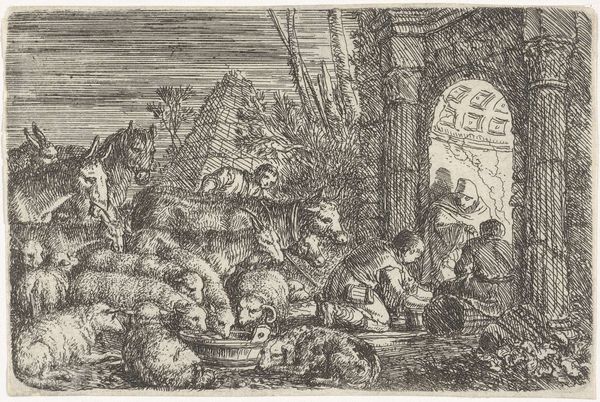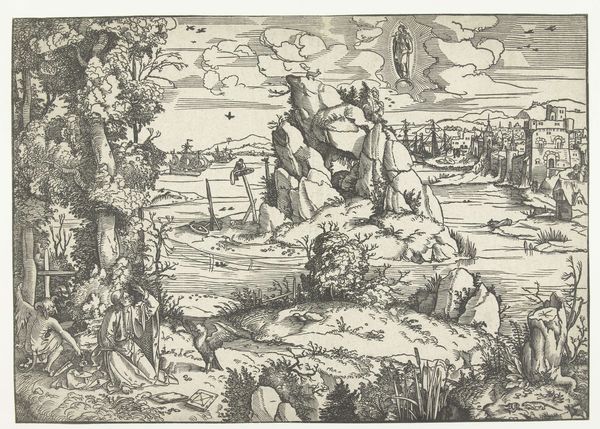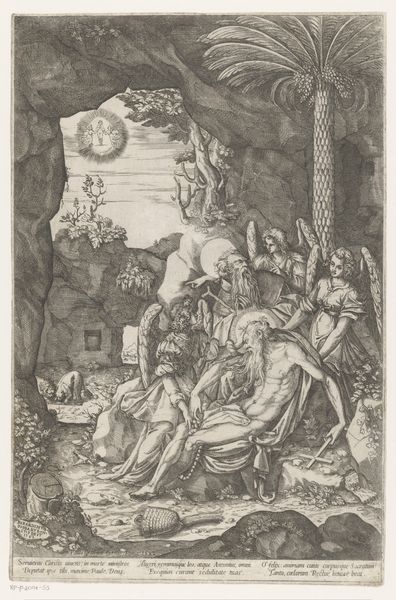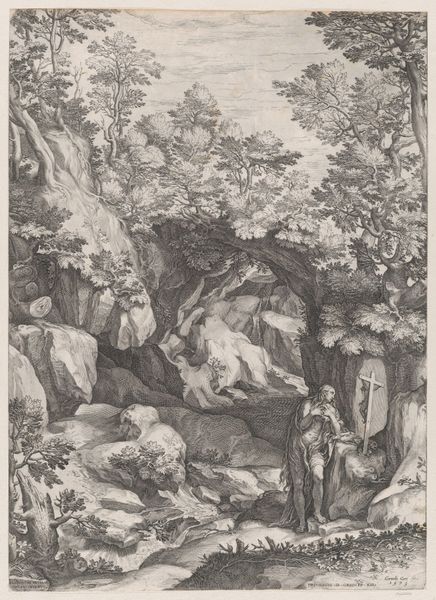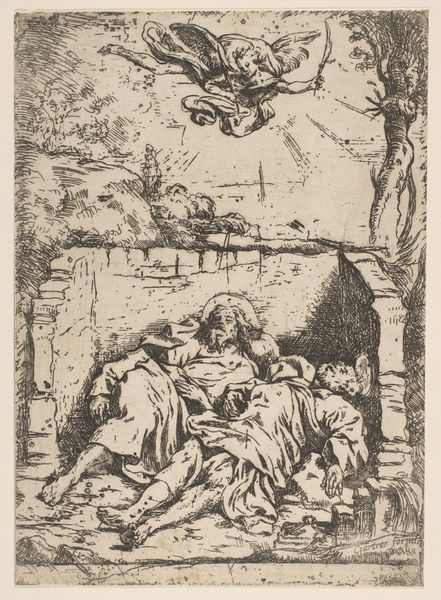
Circe changing the companions of Ulysses into beasts 1650 - 1651
0:00
0:00
drawing, print, etching
#
drawing
#
ink drawing
#
narrative-art
#
baroque
# print
#
etching
#
landscape
#
figuration
#
history-painting
Dimensions: sheet: 8 1/16 x 11 15/16 in. (20.5 x 30.3 cm)
Copyright: Public Domain
Editor: This etching, "Circe changing the companions of Ulysses into beasts," was made by Giovanni Benedetto Castiglione around 1650 or 1651. The fine lines and detailed shading give the scene a dreamlike quality. What draws your attention when you look at this print? Curator: It's the *making* of this image that I find compelling. Consider the materials: ink, metal plate, and the physical act of etching. Castiglione wasn't just illustrating a story; he was engaging in a labor-intensive process, transforming raw materials into something imbued with meaning. How does the reproduction through printmaking change our understanding of this subject? Editor: That's a good point. I hadn't thought about the implications of it being a print. Does the printmaking process itself comment on the transformation occurring within the narrative, a kind of replication or mutation of form? Curator: Exactly. Think about the accessibility of prints during this period. While oil paintings were typically for the elite, prints could circulate more widely. So, we have this classical myth, but filtered through a medium that broadens its consumption. What social role did images like these fulfill? Was it purely didactic, or something more complex? The narrative speaks of transformation, but also of power – a transformation enacted upon laborers by the sorceress. Editor: It's interesting to consider the piece through the lens of its production and consumption. I’m also now looking at the textures created by the etching. Curator: And that is essential. We move past aesthetic appreciation to see how material conditions shape meaning, and what the societal impact might be through mass production. Editor: This has made me see beyond the narrative, appreciating it as a produced object with its own history of labor and accessibility. Thanks!
Comments
No comments
Be the first to comment and join the conversation on the ultimate creative platform.
